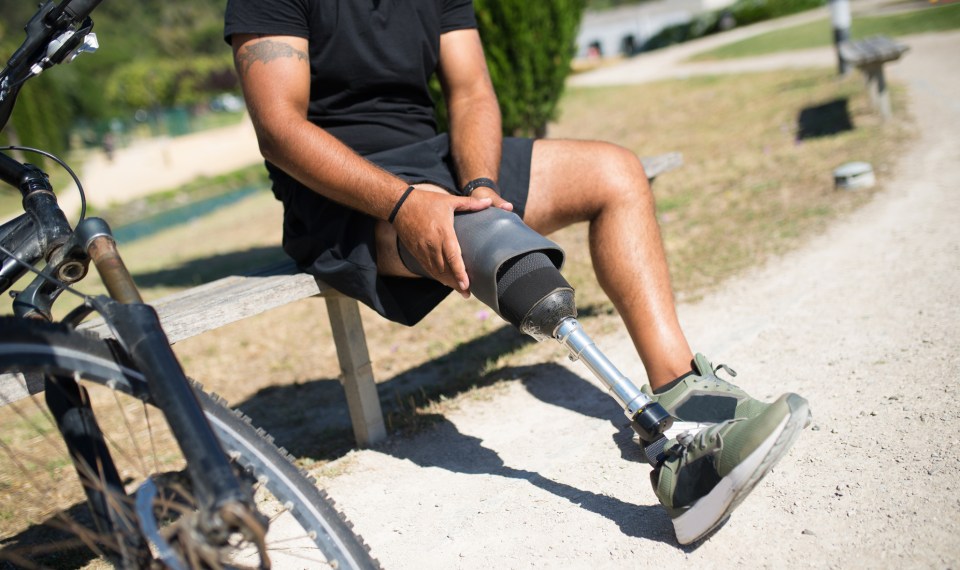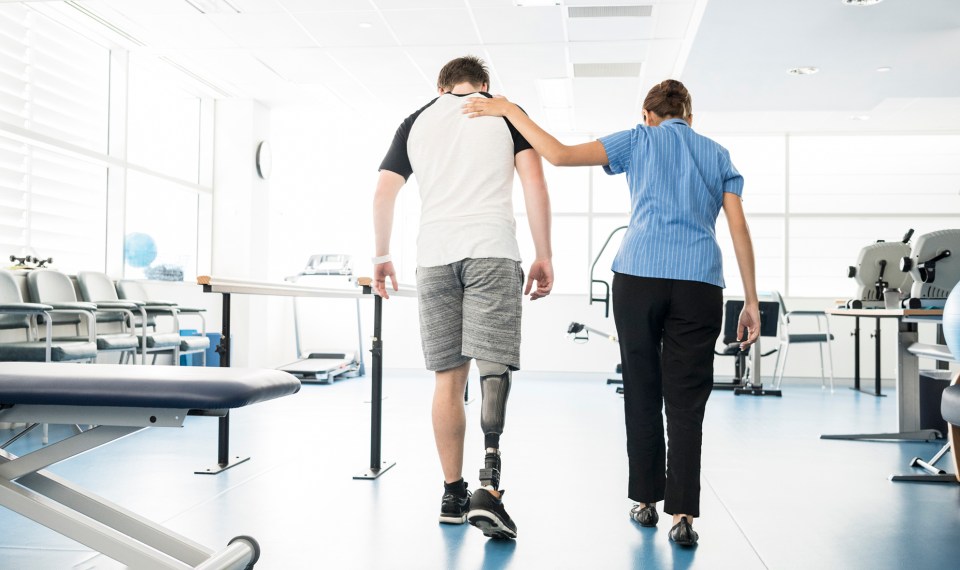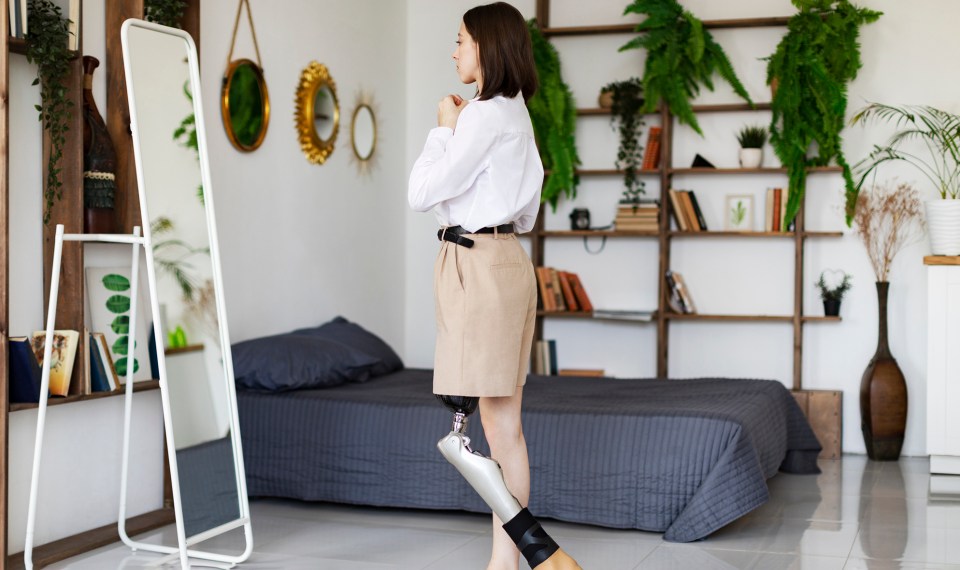Phantom Limb Pain (PLP) is a sensation that occurs in individuals who have had a limb amputated. They feel as though their missing limb is still present and can experience painful sensations in that area. Despite its name, phantom pain is a real, painful sensation. It is considered one of the most distressing consequences of amputation and affects a significant proportion of those with limb loss, ranging from 60 to 80%. Those who encounter pain in the limb before amputation frequently describe phantom limb pain in a comparable manner after the procedure.
Sensations Associated with Phantom Limb Pain
Phantom limb pain is characterized by varying levels of pain, frequency and stability. This pain can be described as:
- Burning
- Constricting
- Cramping
- Stabbing
- Shooting
- Throbbing
- Crushing
- Toes twisting
- Pins and needles
The Limb is Gone, but Why Does the Pain Feel so Real?
The brain has a “map” of the body that it uses to process sensory information. After a body part is amputated, the nerves that carried signals from that part to the brain remain in place. Even though the limb is no longer there, the brain still expects to receive signals from it. When the brain doesn’t receive these signals, it can become confused and start to generate its own signals, making the person feel like they are experiencing pain in the missing limb, even though it is no longer there.
Overall, the mechanisms underlying PLP are complex and remain unclear. However, researchers continue to study this to develop better treatments and interventions for people who are living with this condition.
What Can Trigger PLP?
Various triggering factors cause phantom limb pain. These include physical activity, stress, smoking, constipation and changes in weather, among others. It can be challenging to completely avoid these triggers. Here are some tips to manage triggering factors and/or help alleviate the pain.
- Excessive activity. Engage in regular physical activity and exercise to improve blood circulation, reduce stress and prevent muscle stiffness. However, be careful not to overdo it.
- Weather changes. Keep yourself warm during cold weather, and stay hydrated during hot weather.
- Stress. Reduce stress levels and relax the mind and the body by utilizing stress management techniques such as deep breathing exercises, meditation, massage therapy and psychological therapy.
- Smoking. Quitting smoking is a process, and it may take several attempts to succeed.
- Constipation. Eat a high-fiber diet, drink plenty of water, exercise regularly and establish a regular bathroom routine. Don’t ignore the urge to go (holding in stool can lead to constipation) and manage stress properly.
How to Take Control of PLP?
It is important to note that retraining the brain may take time and patience, and complete elimination of phantom limb pain may not be possible for everyone. It is essential to provide comprehensive care that addresses both the physical and emotional aspects of the condition.
The effectiveness of the interventions may vary from person to person and the severity of their phantom limb pain. A combination of approaches may be necessary for optimal pain relief.
Desensitization techniques are strategies that may help reduce phantom limb pain by gradually exposing the residual limb to a range of sensory stimuli in a controlled manner. Some desensitization techniques that may be effective for reducing phantom limb pain include:
- Visual Mirror Feedback (VMF), aka mirror therapy, involves using a mirror to create the illusion of a whole limb. The mirror is positioned so you can see the reflection of your intact limb, and it appears as though the amputated limb is still present. You then perform mirror-image exercises with the intact limb, which the brain interprets as movements in the amputated limb. This can help reduce phantom limb pain.
- Gentle massage involves gently massaging the residual limb to promote blood flow, reduce inflammation and desensitize the area.
- Tactile stimulation involves applying various textures and temperatures to the residual limb to help desensitize the area and reduce hypersensitivity.
- Phantom limb sensation exercises involve gently touching and massaging the residual limb to create sensations that are similar to those felt in the amputated limb. This can help the brain recognize and process the signals it receives from the residual limb.
- Transcutaneous electrical nerve stimulation (TENS) involves using electrical stimulation to block pain signals from reaching the brain.
- Phantom limb exercises are exercises that are designed to help improve the function of the remaining limbs and reduce the sensation of pain in the phantom limb.
- Prosthetic interventions involve using a prosthetic limb to help reduce phantom limb pain by providing sensory input to the brain that can help “remap” the body and reduce hypersensitivity in the brain.
- Graded motor imagery (GMI) is a relatively new technique for treating PLP. It involves a series of exercises (three steps) that gradually increase in complexity and require the patient to imagine moving the amputated limb in various ways. The exercises start with simple tasks, such as imagining moving the amputated limb (flexing and extending the knee, for example), and progress to more complex tasks, such as imagining using the limb in everyday activities.
- Mixed Reality to Manage Phantom Pain (Mr. MaPP) is an emerging innovation that involves a laptop, camera and virtual reality (VR) headset. Wearing the VR headset, the user plays a series of games that involve using the virtual model of the missing limb to complete tasks such as stomping or bursting a bubble on the screen. This augmented-reality technology overlays real-world objects into virtual settings, and the therapy can be performed at home using a laptop.
If you are experiencing phantom limb pain, work with a healthcare provider (for example a doctor, psychologist, psychiatrist, occupational therapist or physical therapist) who specializes in the management of phantom limb pain to develop a personalized treatment plan that meets your specific needs. After an amputation, inpatient rehabilitation can help you adjust to life after amputation and phantom limb pain. Your care team in an inpatient rehabilitation facility, which includes rehabilitation and wound care nurses and physical and occupational therapists, will design an individualized plan to help you adapt to and manage any pain.
Support Groups can provide a safe space for individuals to connect with others who are experiencing similar challenges, shared experiences, and coping strategies. The following are resources for finding support groups near you:
- Contact an Encompass Health location for information about local support groups near you.
- The Amputee Coalition: This national organization provides resources and support for people who have experienced limb loss or limb difference. They offer in-person support groups in many areas, as well as online support groups and forums. You can contact the Amputee Coalition at 888-267-5669 or visit their website.
- The Limbless Association: This UK-based organization provides support and resources for people who have experienced limb loss, including those with phantom limb pain. They offer a range of resources and support services, including in-person and online support groups. You can contact the Limbless Association at 01245 216 670 or visit their website.
- The International Association for the Study of Pain: This global organization provides resources and support for people with chronic pain, including phantom limb pain. They offer information and resources on their website, as well as a directory of pain management clinics and support groups. You can visit their website.
Resources
- Amputee Coalition. Phantom limb pain.
- Phantom Limb Pain – Physiopedia.
- sp; Collins, K. L., Russell, H. G., Schumacher, P. J., Robinson-Freeman, K. E., Gibney, K. D., Yambem, O., Dykes, R. W., Waters, R. S., & Tsao, J. W. (2018). A review of current theories and treatments for phantom limb pain. The Journal of Clinical Investigation, 128(6), 2168-2176. https://doi.org/10.1172/JCI94003
- https://www.mdanderson.org/publications/focused-on-health/6-steps-to-quit-smoking.h26Z1591413.html
- sp; Rierola-Fochs, S., Varela-Vásquez, L. A., Merchán-Baeza, J. A., & Minobes-Molina, E. (2021). Development and Validation of a Graded Motor Imagery Intervention for Phantom Limb Pain in Patients with Amputations (GraMI Protocol): A Delphi Study. International Journal of Environmental Research and Public Health, 18(22). https://doi.org/10.3390/ijerph182212240
- nbsp; https://pubmed.ncbi.nlm.nih.gov/33460508/#article-details
- Virtual Therapy Shows Real Promise for Managing Phantom Limb Pain – News Center | The University of Texas at Dallas
The content of this site is for informational purposes only and should not be taken as professional medical advice. Always seek the advice of your physician or other qualified healthcare provider with any questions you may have regarding any medical conditions or treatments.



